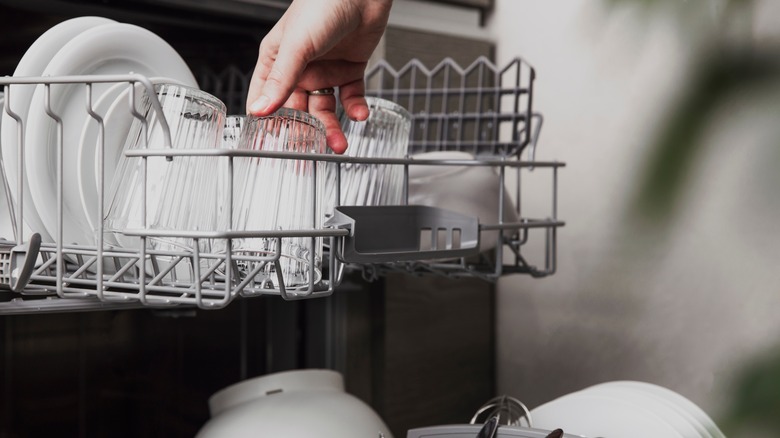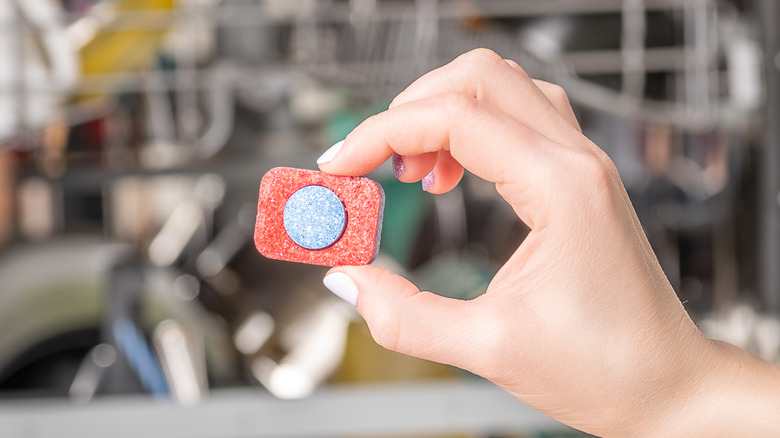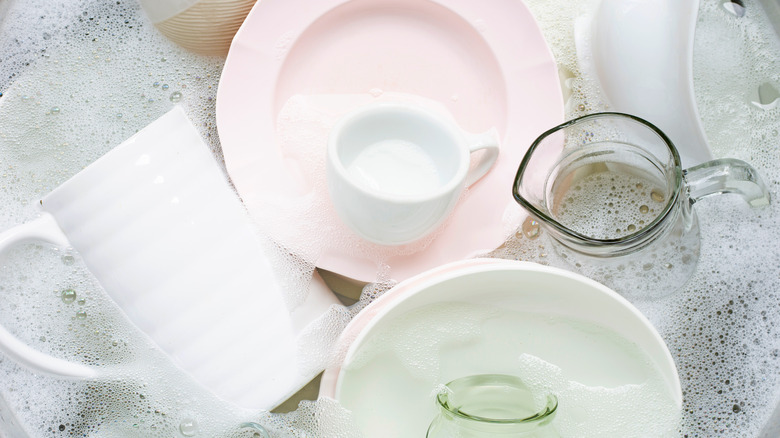How To Get Your Dishwasher To Stop Leaving A White Residue On Your Dishes
It's always embarrassing to hand a glass of water to a guest in your home only to explain that it's clean but looks awful due to the dishwasher. Have you experienced the harmless white residue that makes everything look filthy? If you've had enough, here's what you need to know to get your dishware to shine their brightest.
There are two reasons your dishes might look cloudy. Either they're covered in a residue or have tiny scratches. However, scratches aren't the primary reason they appear hazy. Hard water, which has lots of dissolved minerals, deposits these minerals on everything in your dishwasher, creating a white film. This may leave your glassware looking dirty unless steps are taken to correct the issue. While the white film isn't necessarily dangerous or unhealthy, most homeowners would agree it's a nuisance.
To test which issue you're working with, use some vinegar to wipe down a glass. If the white discoloration goes away, you're dealing with residue from the dishwasher; if it doesn't, your glasses might simply be scratched.
Prevent the white residue
Phosphates were removed from dishwasher products in 2010 due to their negative ecological impact (via NPR), which hastened the age of white film plaguing your kitchenware. To find a detergent that will ensure your glasses sparkle, you'll likely have to test out a few different products while keeping tabs on the results.
Tablets generally work better than powdered detergent, and adding an additional rinse cycle to your routine can work wonders. However, using too much detergent can cause irritating white build-up, another reason individual dishwashing tablets are the ideal choice.
If you've tried a variety of products but haven't achieved the desired results, the problem might lie elsewhere. For instance, turning your water heater's temperature down is bound to lower your electric bill but can cause problems with your dishes. Instead, ensure the temperature is set to 120 degrees or higher for the best results. You may even consider installing a water softener, as this will limit mineral deposits on your dishes.
Get rid of the white residue
Now that you know how to prevent cloudy glassware, let's return those dishes to a shiny state. There are a few ways you can remove the white film. The easiest is gently wiping down your affected dishes with a sponge soaked with vinegar. After removing all cloudy residue, rinse the dishes in the sink and place them on a drying rack.
Unfortunately, this method might not be ideal for items with heavy mineral deposits. Thankfully, there's an alternative method that works wonders on heavy deposits and cleans multiple dishes at once.
For an easy fix that's tailor-made to address a large load of white film-infected glasses, you can fill your sink with warm water and vinegar. Leave the dishes to soak for 30 minutes, then come back and rinse them off with hot water. Although you may need to wipe down some of the glasses with a sponge or cloth, the vinegar bath should help your glassware retain a sparkling appearance.


